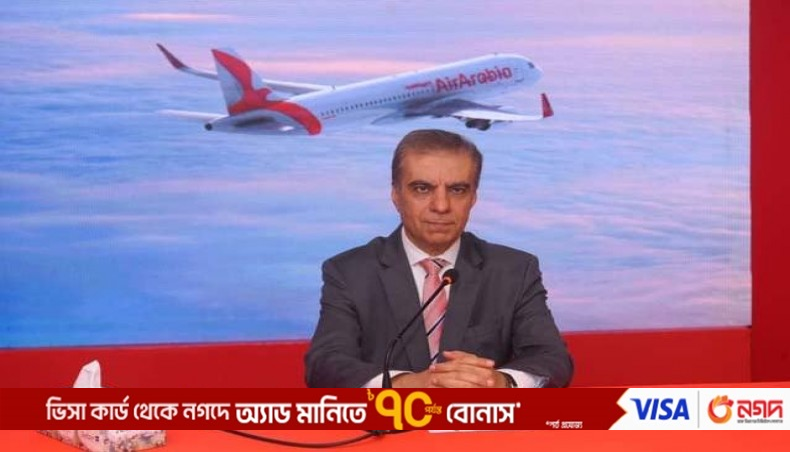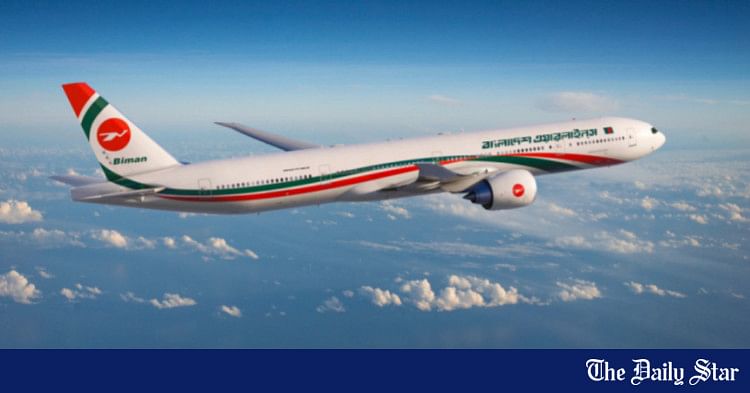HSIA’S THIRD TERMINAL
Shaping Bangladesh’s future as an aviation hub
Photo: Naimur Rahman
The adage 'first impressions are the last impressions, and often the most enduring' rings true, particularly in the context of cities and countries, where airports play a pivotal role in shaping these impressions.
Dhaka's old-fashioned Hazrat Shahjalal International Airport (HSIA), built in 1980, has not undergone any major renovations since then. Furthermore, the main gateway to the country by air does not align with the present state of the capital, especially as Bangladesh is advancing towards becoming a developing nation.
With this backdrop, the dream of constructing the iconic and spectacular
third terminal at HSIA, which began in December 2019, has finally become a reality today.
Prime Minister Sheikh Hasina will soft launch the third terminal amid celebrations.
"It's a dream come true. The eye-catching design and modern structure of the iconic terminal, along with world-class facilities, will redefine the passenger experience at Dhaka Airport," said Civil Aviation Authority of Bangladesh (CAAB) Chairman Air Vice Marshal M. Mafidur Rahman.
"With the usage of the third terminal, your journey will be a pleasant experience. The definition of people's airport experience will change with the full operation of this terminal," he added.
The CAAB chief explained that the
third terminal is being built in a way that allows passengers to get a good idea of Bangladesh upon landing at the airport. All kinds of facilities will be available in this terminal.
Approximately 90 percent of the terminal's construction work is completed, with ongoing work on interior decoration and the installation of various types of equipment.
Bangladesh's prospects of becoming a regional aviation hub will brighten with the full operation of the third terminal, as many foreign carriers have already expressed interest in operating flights to and from Dhaka, which will also contribute to the country's economic growth.
The third terminal will remain connected to the airport route of the MRT Line-1 project, according to MA Malek, chief engineer of the CAAB. Therefore, anyone arriving at Kamlapur Rail Station from any part of the country will be able to reach the
third terminal via the underground metro rail, which spans 19.87 kilometers from Kamlapur to the Airport and includes 12 stations.
The third terminal will also be connected to the Airport Railway Station, allowing travelers to access the terminal via an underground path between the Airport Rail Station and the third terminal, as explained by an official of the
third terminal project.
Moreover, pilgrims will have the option to access the terminal through an underground tunnel connected to the Ashkona Hajj Camp. Additionally, an elevated expressway will provide convenient access to the terminal.
Inbound passengers arriving from different countries, like outbound travelers, will be able to exit the airport without any hassle or inconvenience.
Despite its soft opening, air travelers will have to wait until the end of next year to fully utilize the terminal's services. This is due to the necessary calibration and preparation of the equipment used in terminal operations, as clarified by the CAAB boss. However, airlines will be able to use the new parking apron and taxiway of this terminal.
With its existing two terminals, HSIA is already operating at full capacity, handling eight million passengers annually. Anticipating passenger numbers to reach 14 million by 2025 and 24.8 million by 2035, the urgent need for the construction of a world-class terminal became evident.
In parallel with the third terminal project, four additional works are underway, including the construction of two high-speed taxiways alongside the terminal, which will expedite aircraft runway clearance and reduce take-off wait times.
Currently, car parking is a major problem at this airport, but the new terminal will have a parking facility for around 1,230 cars.
The celebrated architect Rohani Baharin designed the third terminal, with construction undertaken by Mitsubishi and Fujita of Japan and Samsung of Korea.
Anticipating passenger numbers to reach 14 million by 2025 and 24.8 million by 2035, the urgent need for the construction of a world-class terminal became evident.
“Third terminal will offer world-class services like those at Changi and Dubai airports”
Air Vice Marshal M. Mafidur Rahman, Chairman, CAAB
The iconic third terminal at Hazrat Shahjalal International Airport will be a game-changer for the country's aviation sector, and passengers' existing negative mindset will be transformed when they receive world-class service at this terminal.
Chairman of the Civil Aviation Authority of Bangladesh (CAAB), Air Vice Marshal M Mafidur Rahman, mentioned this in an interview with The Daily Star.
"At present, passengers using terminals 1 and 2 have a negative mindset as they witness a huge crowd and chaos at Dhaka airport, which is currently operating unsystematically," he explained.
Currently, departure and arrival formalities occur at the same place within the airport, resulting in long queues and crowds at immigration and the luggage belt, congested areas, and inadequate lighting, all contributing to passengers' negative perceptions.
Then there's the issue of service, which is not up to par at Dhaka airport presently.
"Now, people will feel relaxed after landing at Dhaka Airport, and they will get an image of the country—what it's like while using the third terminal," said the CAAB boss.
The aesthetic beauty, design, and spaciousness of the third terminal will provide passengers with world-class service comparable to Changi Airport in Singapore or Dubai Airport.
"It's a dream come true. The eye-catching design of the terminal and having world-class facilities will change the definition of providing passenger service at Dhaka Airport," Mafidur said.
An adequate number of wide glass lifts, escalators, lighting facilities, luggage conveyor belts, immigration and check-in counters, cabin and hold baggage X-ray machines, and body scanners will provide passengers with smooth service facilities.
Every system within the third terminal, including luggage handling, will be fully integrated and automated.
Regarding the operation and maintenance of the third terminal, the CAAB chairman said that it will be provided by a Japanese company, as they are already efficiently handling various international airports with a good reputation and maintaining international standards.
"We are hoping that passengers will receive better service with this new management of the third terminal," added Mafidur.
He also mentioned that a modernized approach will be ensured while distributing commercial entities at the third terminal, which was absent in terminals 1 and 2.
There was no system in place for allocating commercial shops at these two terminals. A completely non-standard pattern was followed in this regard. Food and beverage outlets, duty-free shops, airport lounges, and all other shops will be allocated following global international practices.
The third terminal was also built with an environmentally friendly approach, maximizing natural daylight and minimizing electricity usage.
Most of the technologies and equipment used in the airports of G7 countries were also used in the third terminal.
In the third terminal, passengers will not need any assistance as everything will be well-displayed. Furthermore, an artificial intelligence-based sensor will be incorporated in this third terminal in the next phase.
After the single security check, passengers will be able to board the aircraft directly, eliminating the existing six to seven check-ups at terminals 1 and 2, as explained by Mafidur.
"Considering all these factors, the third terminal will be a milestone for Bangladesh," he added.
Similarly, outbound travelers and inbound passengers arriving from different countries will also be able to exit the airport without any hassle or inconvenience.
"There is a saying that the first impression is the last impression. We have built the third terminal in such a way that any foreigners landing at Dhaka Airport can understand that Bangladesh has undergone significant changes and is progressing towards becoming a developed nation," he added.
The CAAB chief mentioned that with the launch of the third terminal, Bangladesh will also become a regional aviation hub. This will truly be a game-changer, positioning Bangladesh as the "Switzerland of the East" due to its global location.
He also noted that transit passengers will be able to spend their time comfortably at the third terminal.
"A large lounge has been constructed for transit passengers in the new terminal. It will serve 4 million passengers annually," he said, adding, "Passengers will also enjoy seamless travel transitions to and from the airport."
To meet passengers' needs during transit, a range of amenities is being introduced, including movie lounges and food courts designed to enhance the passenger experience.
Additionally, airline lounges and dayrooms will be available for travelers seeking comfort and relaxation.
A children's play area equipped with sleeper swings will be provided for young travelers to enjoy.











































